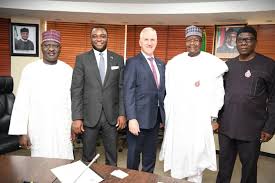There are no products in your shopping cart.
| 0 Items | £0.00 |


NIGERIA'S Federal Ministry of Communications and Digital Economy and the Nigerian Communications Commission (NCC) have signed up to the UK’s Digital Access Programme's plan on inclusion for persons living with disabilities (PLWDs).
Earlier this week, the ministry and paratstatal facilitated a technical conference on the subject which sought to show the UK government’s commitment to support Nigeria in its inclusive digital economic agenda. It also sought to promote the growth of the Nigeria tech ecosystem and close the digital divide in the country.
Among other things, the conference was organised to aggregate views and develop quick-win strategies to resolve the issues of populations without access to digital. Its essence was to bring the poor and excluded people into the digital economy, thereby reducing poverty and stimulating economic growth.
Over recent times, the UK has continued to place the development and adoption of digital inclusion at the very heart of its agenda to be a global force for good. Among other things, the UK recognises the power of the digital economy to deliver on the United Nations sustainability development goals (SDGs).
This week's virtual conference in collaboration with all levels of government, private sector partners, civil society organisations, and the international development community, was the critical first step to promote the need for affordable, inclusive, safe and secure digital access for underserved or excluded populations. A technical report presented at the conference, focused on demand, supply and systematic issues, which currently hinder digital inclusion efforts.
Ben Llewellyn-Jones, the British deputy high commissioner to Nigeria, said: “As our fight against the Covid-19 pandemic goes on, our focus is on supporting a sustainable and resilient recovery across Nigeria. Tech has the ability to help us tackle some of the greatest social challenges of our time, from protecting our environment and reducing carbon emissions, to transforming health systems, saving lives through diagnosing diseases earlier, to aiding economic inclusion by deepening access to underserved populations.
“To drive this growth, Nigeria needs a combination of increased access to faster and better quality Internet connectivity infrastructure, an upskilled tech talent pool, a vibrant start-up ecosystem, access to investment and partnership opportunities both regionally and internationally.”
Nigeria's communications manager Dr Isah Pantami, added: “The federal government’s priority is developing strategy and policy to provide an enabling environment which supports the private sector to bridge the digital divide. We are supporting the growth of the sector, which contributed 14.70% in to gross domestic product in the fourth quarter of 2020 and will continue to do so.
“On-behalf of President Buhari, I want to thank the UK government for their continued support for Nigeria’s digital sector including the development of the national broadband plan which has led to a 10% increase in broadband penetration in Nigeria since it was launched a year ago.”
Professor Umar Danbatta, the NCC vice chairman, also thanked the UK government’s Digital Access Programme for its support in championing digital inclusion in Nigeria. He added: “Previously there were about 200 clusters where there are digital access gaps, this means that 40m Nigerians do not have access to telecommunications or internet services.
“On the part of the NCC, we are working on cutting down these clusters and as of today, we have cut them down to 114 and reduced the population size by 10m. I appreciate the efforts of the UK government through their Digital Access Programme for coming up with this diagnostic study on identifying the gaps to access as they exist today.”
Alessandra Lustrati , the UK's Foreign Commonwealth and Development Office head of digital development, said: “This project provides empirical evidence to demonstrate that despite progress made, a huge digital gap exists between unserved and underserved communities and PLWDs on one hand and the rest of the society on the other hand. However, more importantly, it has also recommended possible solutions.”